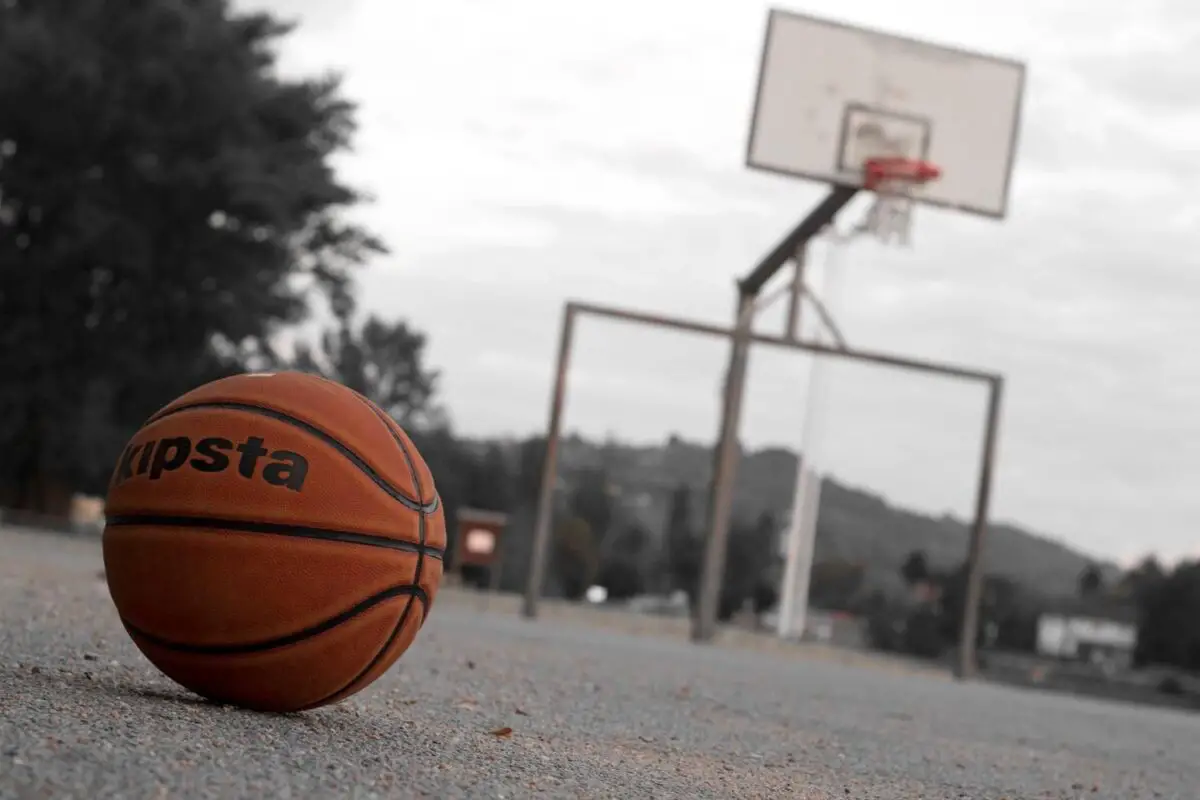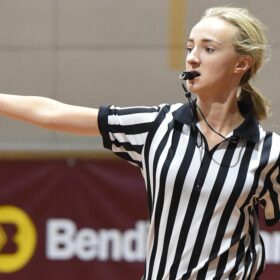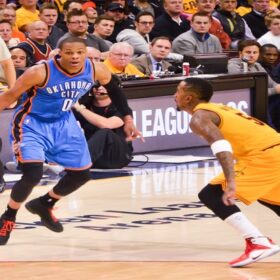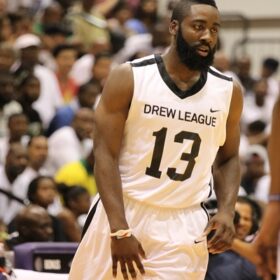If you are into basketball, then you have got to know the rules of the game first before you go dribbling aimlessly into a basketball court. To make things easier, we have the basic basketball rules and regulations all in one place.
Double Dribbling
Double dribble is illegal dribble in a basketball game. This dribbling violation occurs when a player dribbles the ball with both hands concurrently or pursues to dribble after making the ball rest position in one or both hands. In such a case, the referee calls a dribbling violation.
As a result, the opposition team will get the possession of the ball at the sideline which is closest to the dribbling breach, but no nearer to the baseline than the foul line broadening. However, there is an exception to the rule. The exception is known as power dribble. The dribble can be used once and can be utilized after getting a pass in the lane.
Backcourt Violation
This type of violation occurs when the offense becomes unsuccessful to fetch the ball from the backcourt to the frontcourt within eight seconds after getting possession. In such a case, the opposition team inbounds the ball from the sidelines as the offensive team loses the possession of the ball.
This happens when the defensive team applies full-court pressure and one of their goals harasses the ball handlers to prevent them from crossing the half court in less than eight seconds. However, before 2001-02, the time limit was 10 seconds in the NBA. The NBA reduced the time limit to bring more up-tempo style in the basketball game.
Goaltending
Goaltending occurs in two ways i.e. offensive goaltending and defensive goaltending. The details of these two types of goaltending are as follows.
Offensive Goaltending
This type of goaltending is less common than defensive goaltending. This happens when a player legally shoots the ball and his teammate does the following.
- Lay a hand on the rim and the ball is on the rim
- Make contact with the net when the ball is on the ring
- Lay a hand on the rim when the ball is in the downward path and the imaginary cylinder above the ring
As a result of offensive goaltending, the other team will gain possession of the ball. Furthermore, the offensive team will not get any score.
Defensive Goaltending
This type of goaltending is much more common than the other one. This goaltending occurs in the same ways of offensive goaltending. The only difference is a defender commits this type of goaltending to obstruct a shot of an offensive player to prevent the ball from clearing the basket. The offended team is awarded two points in such a case if the goaltending has happened from a two-point zone. In case the goaltending has happened in the three-point zone, the offensive team will get three points.
General Rules and Regulations in Basketball for Beginners
1. You will have to limit your playing activities withing the periphery of the basketball court
2. You may throw the basketball in any direction. While doing this, you can use one of both your hands.
3. The team to score the most points win.
4. You must dribble the ball along with you as you run
5. To catch a ball, you must use your hands and no other parts of the body can be used in the process
6. You must not push, elbow, shoulder or strike your opponent during any time in the game
7. A team scores a point if a player gets the basketball through the hoop. In case the ball stays up there, a point is still awarded to the team.
8. A referee is appointed to judge the basketball game. He keeps notes of the points, time, and fouls throughout the match.
Rules for Defensive & Offensive Players
In each of the teams, there are two defensive players, and three offensive players. The Rules and Regulations in Basketball on how the defensive and offensive players should conduct themselves in the court are different. Let’s take a look.
Rules for Defensive Players
3 Second Rule
The defensive 3-second rule applies only in leagues like NCAA and NBA. The FIBA and High School league do not abide by this rule. According to this, a defensive basketball player shall not remain in the restricted area for more than 3 seconds.
No Contact Rule:
A defensive basketball player must not touch a player with the ball while guarding. The initiation of a touch on the defender’s part will result in a foul.
Rules for Offensive Players
• Stay within the periphery of the basketball court.
• You must dribble the ball with a single hand. Using both hands for dribbling is not allowed in basketball.
• While dribbling, your hands must be on top of the basketball. As an offensive player in the team, you should not carry the ball or run with it without dribbling it with one hand atop it.
• You get only one shot at dribbling a ball at a time. Once you stop doing it, you must pass the ball instantly to another player (preferably your teammate). You cannot start dribbling again. If you do so, it results in a foul.
• Backcourt violation is another thing to watch out for. This means that you get past the half-court line, you should not go back until a defensive player tosses the ball back to the other side of the basketball court.
Detailed Rules and Regulations in Basketball
Now that you have got a general idea about the Rules and Regulations in Basketball, let us proceed to some specific rules that kids who take basketball seriously would like to know.
Court Measurement
Different basketball leagues use different types of court measurements. Generally speaking, you will be more accustomed to the courts that are 94 feet long and has a width of 50 feet. The NBA courts are of this dimension. But if you plan on playing FIBA style, then you have to cut down the measurements by a notch. The FIBA basketball courts are 91.9 by 49.2 ft.
Number of Players
The total number of players playing in a match is 12. Each team consists of 6 players, among which 5 should be playing on the court. The remaining 1 player should remain outside the court and act as a substitute when needed.
Duration of the Basketball Game
Knowing the Rules and Regulations in Basketball regarding the duration is essential, as timing is everything.
The match consists of four quarters. The duration of each of the quarters is 12 minutes. However, that is just for the NBA. The duration changes with the basketball league. For instance, the NFL has quarters of 15 minutes. The NCAA has halves instead of quarters. Each half is 20 minutes.
In the case of a draw, there will be an additional 2.30 minutes of overtime period without any change of baskets.
Scoring
The main objective of basketball is to outscore the team that is against you. Here is how the basketball scoring system works:
• 3 Points: A team is given three points if a player puts the basketball through the hoop from behind the three-point line.
• 2 points: A player gets two points if he shoots the ball through the hoop when he is inside the three-point line.
• 1 point: If a player scores a basket in a foul shot, the team gets 1 point.
24 Second Shot Clock
This rule was invented to pace up the game of basketball in the 1950s. According to the 24- second shot clock, a team will have to make a legal shot at the basket within 24 seconds after they have kept the control of the ball. The shot might score the team a basket or be a miss. For the shot to be a valid one, it should touch the rim of the basket.
Foul & Violations
The Rules and Regulations in Basketball regarding foul and violations are almost the same in all leagues.
• If a defensive player steals the basketball, it can result in a foul.
• Personal fouls happen if there is any kind of intentional pushing, slapping, knocking, striking, or holding during the entire match.
• Blocking the opponent’s path with the help of any type of measure is deemed to be foul in basketball.
• Using obscene language, gestures, or arguing with the referee comes under the purview of ‘technical foul.’
A basketball player who commits 5 personal fouls within the duration of 40 minutes or 6 fouls within 48 minutes is disqualified from the game.
There are various types of violations as well that a player can commit. Here is a list.
• Double dribbling
Listing Out Some Types of Technical Foul in Basketball are As Follows:
- Hold up the game
- Having a team overall of less or more than five players when the ball becomes alive
- Defensive 3-seconds
- A player hanging on the basket ring or backboard
- A player participated but he/she is not in the team’s active list
- Smashing the backboard
- Making the rim unplayable during the game
- Coaches box violations





